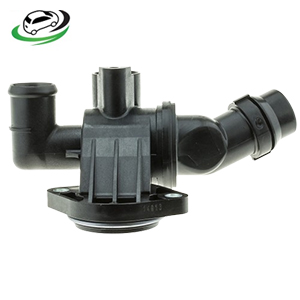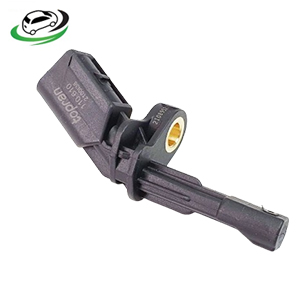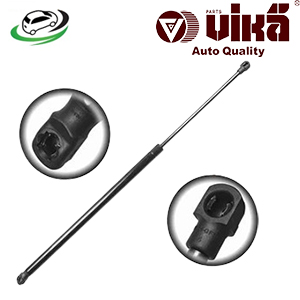-13%
Get Hood Strut/Lift Support VW 337/20AE 1.8T/Golf IV 1.8T/2.0/TDI/VR6 12v / Jetta IV-1.8T/2.0/TDI / Jetta IV GLI/ R32 MKIV 1J0823359C
The hood strut, also known as a lift support, is a small yet crucial component found in many vehicles, designed to hold the hood open without the need for manual support. It provides a convenient and safe way to access the engine compartment for maintenance, repairs, or inspections. Despite its simplicity, the hood strut plays a vital role in the daily use and maintenance of a vehicle. In this explanation, we’ll explore what a hood strut is, how it works, its importance, common issues, and tips for maintenance and replacement.
What is a Hood Strut/Lift Support?
A hood strut, also referred to as a lift support or gas spring, is a hydraulic or gas-charged piston that assists in lifting and holding the hood of a vehicle in an open position. It is usually installed in pairs, one on each side of the hood, although some vehicles may have a single strut. Hood struts are designed to make it easier to lift the hood and keep it securely open, eliminating the need for a manual prop rod.
How Does a Hood Strut Work?
A hood strut operates using a simple mechanism that combines gas pressure with a hydraulic piston to provide lifting force. Here’s a step-by-step breakdown of how it works:
- Gas Pressure: The main component of a hood strut is a sealed cylinder filled with nitrogen gas. The gas is pressurized, creating a force that pushes the piston rod outward.
- Hydraulic Damping: The strut also contains hydraulic fluid that helps control the movement of the piston rod. This ensures a smooth and controlled opening and closing of the hood.
- Piston Rod Movement: When the hood is lifted, the piston rod extends outward, and the gas pressure inside the cylinder assists in lifting the hood. The hydraulic fluid slows down the movement, preventing the hood from flying open too quickly.
- Holding the Hood Open: Once the hood is fully open, the hood strut maintains its extended position, holding the hood securely in place. The pressure inside the strut is sufficient to keep the hood open, even against external forces like wind or gravity.
- Closing the Hood: When you lower the hood, the piston rod retracts into the cylinder. The gas pressure decreases as the hood is closed, and the strut returns to its original position, ready to assist the next time the hood is opened.
Importance of the Hood Strut/Lift Support
The hood strut is an essential part of vehicle maintenance and safety for several reasons:
- Convenience: The hood strut makes it much easier to open and hold the hood without the need for a manual prop rod. This is especially helpful when you need to work under the hood with both hands free.
- Safety: A properly functioning hood strut ensures that the hood remains securely open, preventing it from accidentally falling and causing injury or damage. This is particularly important when working on the engine or performing maintenance tasks.
- Ease of Access: By holding the hood open at a stable and consistent height, the hood strut provides easy access to the engine compartment. This makes it easier to perform inspections, repairs, and routine maintenance.
- Professional Appearance: Vehicles equipped with hood struts often have a more modern and professional appearance, as the struts eliminate the need for a visible prop rod. This gives the vehicle a cleaner, more streamlined look.
Common Issues with Hood Struts
While hood struts are designed to last for many years, they can wear out over time due to various factors. Here are some common issues associated with hood struts:
- Loss of Gas Pressure: Over time, the pressurized gas inside the strut can slowly leak out, reducing the strut’s ability to hold the hood open. This is one of the most common issues with hood struts.
- Hydraulic Fluid Leaks: If the seals inside the strut fail, hydraulic fluid can leak out, leading to a loss of damping and causing the hood to open or close too quickly. This can be dangerous, as the hood may not stay open or could close unexpectedly.
- Corrosion and Wear: The metal components of the hood strut, including the piston rod and cylinder, can become corroded or worn over time. This can cause the strut to stick or operate less smoothly, making it difficult to open or close the hood.
- Cold Weather Issues: In extremely cold temperatures, the gas pressure inside the strut can decrease, reducing its effectiveness. This may cause the hood to sag or fail to stay open in cold conditions.
- Physical Damage: Hood struts can be damaged by impacts, such as from a collision or improper use. A bent or damaged strut may not function correctly and should be replaced.
Signs of a Failing Hood Strut
Recognizing the signs of a failing hood strut is important for maintaining safety and convenience. Here are some common symptoms that indicate the hood strut may need to be replaced:
- Hood Doesn’t Stay Open: If the hood gradually lowers or fails to stay open when lifted, it’s a clear sign that the strut is losing its effectiveness and needs to be replaced.
- Hood Drops Suddenly: A sudden drop of the hood when it’s supposed to stay open is a dangerous sign that the strut has failed completely. This can lead to injury or damage if not addressed immediately.
- Difficulty Lifting the Hood: If you find it difficult to lift the hood, or if it feels heavier than usual, the strut may be failing to provide adequate support.
- Visible Leaks: If you notice hydraulic fluid leaking from the strut, it’s a sign that the internal seals have failed, and the strut needs to be replaced.
- Noisy Operation: Squeaking, creaking, or grinding noises when opening or closing the hood can indicate that the strut is worn or corroded.
Maintaining and Replacing Hood Struts
Proper maintenance and timely replacement of hood struts are essential for ensuring they function correctly. Here are some tips for maintaining and replacing hood struts:
- Regular Inspections: Periodically inspect the hood struts for signs of wear, leaks, or corrosion. Check the operation of the hood to ensure it opens smoothly and stays open securely.
- Lubrication: While hood struts are typically sealed units and don’t require lubrication, you can apply a light lubricant to the mounting points and hinges to ensure smooth operation.
- Replace in Pairs: If one hood strut fails, it’s recommended to replace both struts at the same time. This ensures balanced support and prevents uneven wear.
- Use Quality Replacements: When replacing hood struts, use high-quality, OEM (Original Equipment Manufacturer) or equivalent parts to ensure proper fit and function.
- Follow Manufacturer’s Instructions: Always follow the vehicle manufacturer’s instructions when replacing hood struts. This ensures proper installation and avoids damage to the hood or struts.
How to Replace a Hood Strut
Replacing a hood strut is a relatively simple task that can be done with basic tools. Here’s a general guide to the replacement process:
- Gather Tools and Parts: You’ll need a new set of hood struts, a flathead screwdriver, and possibly a wrench or socket set, depending on your vehicle’s design.
- Prop the Hood: Before removing the old struts, prop the hood open with a sturdy object, such as a broomstick or a piece of wood, to prevent it from falling.
- Locate the Strut Mounts: Hood struts are typically mounted at two points—one on the hood and one on the body of the vehicle. Locate these mounting points and note how the strut is attached.
- Remove the Old Strut: Using a flathead screwdriver, carefully pry off the retaining clips or bolts that hold the old strut in place. Gently remove the strut from the mounting points.
- Install the New Strut: Position the new strut in place and secure it to the mounting points using the retaining clips or bolts. Make sure the strut is oriented correctly, with the thicker end (cylinder) usually attached to the body and the thinner end (piston rod) attached to the hood.
- Test the Operation: Once the new struts are installed, gently lower and lift the hood to ensure it operates smoothly and stays open securely.
- Remove the Prop: After confirming that the hood stays open with the new struts, remove the temporary prop and close the hood.
Follow us on Facebook for more parts.



